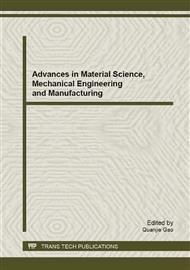p.552
p.556
p.561
p.566
p.571
p.579
p.585
p.591
p.595
Challenges of Battery Pack to the Industrialization of Battery Electric Vehicles and the Corresponding Solutions in China
Abstract:
The development situation of power batteries is described in this paper. After a detailed comparison between lead-acid battery, Ni-MH battery and Li-ion battery, it is concluded that polymer Li-ion battery is the most promising power source for battery electric vehicle (BEV). Although great achievement has been obtained in Li-ion battery development, restrictions still remain on the industrialization of battery electric vehicles. Poor battery packs, patent disputes and the establishment of charging facilities are three key problems in the process of industrializing BEVs. Finally, the generalization of BEVs relies on not only marketing efforts by automotive manufacturers, but also policy support by the government.
Info:
Periodical:
Pages:
571-575
Citation:
Online since:
August 2013
Authors:
Keywords:
Price:
Сopyright:
© 2013 Trans Tech Publications Ltd. All Rights Reserved
Share:
Citation:


